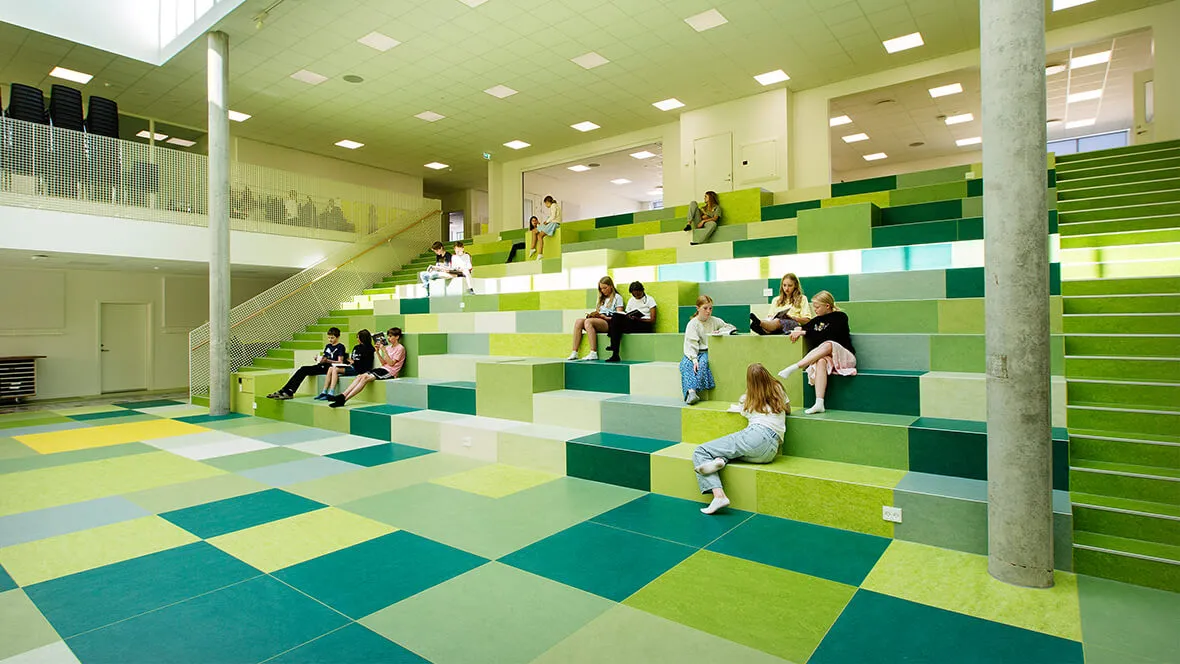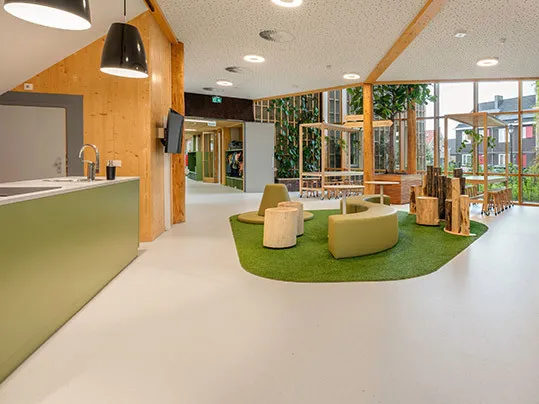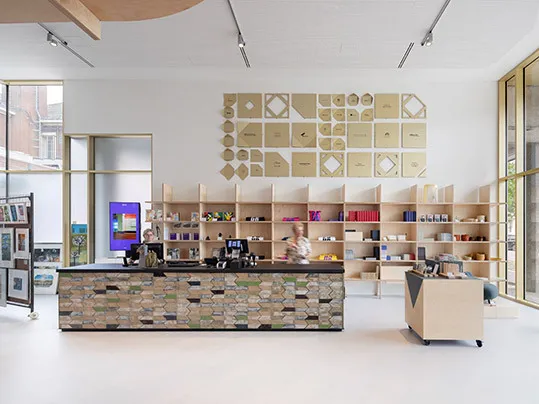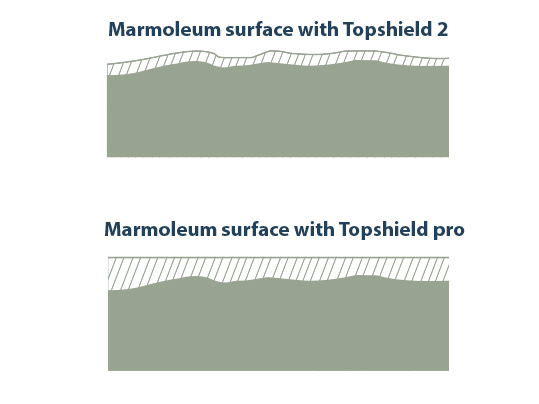Keeping linoleum beautiful for longer
To maximise the lifespan of our superior Marmoleum products, minimise costs and contribute towards healthy indoor air, three key factors should be respected.

Flooring plays an important functional and aesthetic role in building interior design. Linoleum is a popular choice of flooring for a wide range of interiors as it is hard-wearing, water-resistant, stain-resistant and available in a multitude of colours and designs.

Today, linoleum is a popular choice of flooring for many interiors, from schools, shops and offices to leisure facilities, hospitals and care homes, as it is easy and inexpensive to clean, looks new for a long time and is long-lasting, providing a good return on investment.
Made of natural materials, it is a sustainable product that contributes towards healthy air in indoor environments, making it the best natural flooring solution.
Invented over 150 years ago, linoleum is a resilient floor covering that has been revered for many years. Traditionally a product used in kitchens, linoleum has since come a very long way in terms of design and quality, with innovative developments in adhesives, surface treatment and linoleum technology.
Despite the many product innovations that have vastly improved the characteristics of linoleum, some common myths surrounding this flooring product still remain:
MYTH 1: Linoleum needs to be treated with polymer and wax
Linoleum flooring previously required the annual application of a polymer-based or wax treatment to keep it water-resistant and protect it against stains, wear and accidents. However, due to advances in technology and the adoption of new techniques increasing the performance of linoleum, these treatments are no longer needed.
MYTH 2: Linoleum cannot cope with excessive water
Linoleum is in fact water-resistant as a result of surface finishes creating a waterproof layer. With a watertight installation, it can cope with large amounts of water, even in areas of intensive use.
MYTH 3: Mould grows under a linoleum floor
With today’s superior linoleum products and adhesives, there is no space for mould to grow under the flooring. The natural antibacterial properties of linoleum also make it resistant to the growth of mould and mildew.



One of the greatest attributes of linoleum today is the surface finish. The protective surface finish is the reason why polymer and wax treatments are now a thing of the past. Forbo Flooring’s Marmoleum with Topshield pro surface finish, for example, is composed of a two-layer system. The first layer is a primer that bonds with the linoleum surface and is both thermal and UV-cured to create an initial layer of protection.
The top protective layer of lacquer gives the flooring an even stronger and smoother surface. It is harder wearing and more resistant to scratches, scuffs and stains. As the surface is smoother, less dirt builds up on the floor so it is easier to clean. These innovative, protective surface finishes help to retain the original appearance of the flooring, so it looks new for longer.
To keep linoleum looking beautiful, it is important to consider some key factors:
Cleaning and maintenance
When a linoleum floor is properly cleaned and maintained, it will retain its appearance and function, without the need for a wax or polymer treatment. A good cleaning and maintenance regime will save time and money.
Entrance systems
Dirt and moisture are the greatest threats to linoleum, but a well-designed entrance system with high-quality matting prevents most dirt and moisture from entering the building, protecting the linoleum flooring in the building’s interior.

Furniture protection
Using suitable furniture leg protection for tables and chairs protects linoleum flooring against damage. The use of protective caps or felt pads on the base of the furniture prevents surface scratches.
Choice of colour and pattern
The design and the colour choice influences the appearance over time. In a school with heavy footfall and little time for cleaning it is recommended to use a more marbled design in softer tones for instance.
Read more on how to keep linoleum looking beautiful in our latest whitepaper, which highlights the importance of a proper cleaning and maintenance regime and the key steps that should be taken to maximise the lifespan of this natural flooring product.
TO THE WHITEPAPER